From Alison: November 20. It’s our first afternoon in Pushkar, getting towards dusk. We’ve been walking the narrow winding streets, and have found our way to the fairground and back through the busy market streets. Julie is photographing something. I’m waiting under the corrugated awning of a street stall when suddenly I feel water running onto and down my arm. Jesus, where did that suddenly come from? I look up. There’s a steady stream. Somehow I manage to get it onto the other arm as well, and then wipe my forehead with the back of my arm, so now it’s on my face too. I look up and see a monkey sitting on the roof. I don’t quite believe it at first. I can’t quite take it in. The monkey is pissing. I’ve just been pissed on by a monkey! Holy sh*t! Um, no, actually it’s Holy piss. Since monkeys are regarded as sacred animals here, make that blessed by a monkey. I have only seven words to say about it really: praise the Lord for antiseptic wet wipes.
Oh, and eeeeewwwwww.
Indian animals love me it seems. In Tiruvannamalai I was head butted by a holy cow. Now in Pushkar I’ve been pissed on by a sacred monkey. Blessed indeed.
From Don: India has been amazing, but Pushkar at the time of the Camel Fair is an astonishing assault on the senses. The town is one of the oldest in India, and the place we stayed, The Everest Hotel, is in the old part of town. We came from Jodhpur by car but the last part of our journey was a five-minute walk along narrow twisting alleyways to the hotel. We’d never have been able to find it by ourselves, but someone came from the hotel to meet and guide us there. The hotel was perfect for our needs: far enough from the fair grounds and the busy market around Pushkar Lake to provide a quiet haven of rest when we needed it, but close enough that we could walk everywhere. Each morning I was woken by the sound of sweet music and chanting. We were given a “map” of the town, but the map was not by any stretch of imagination the territory, and the entire town is narrow twisting alleyways. We were frequently lost. Fortunately for us wherever we went in the old town there were blue arrows with the words EVEREST HOTEL painted on them, so we never stayed lost for very long.
Our hotel had a restaurant on the roof that had a great view over the town and countryside. The restaurant was open all day so we could get a cooked meal any time we wanted. They had a pet tortoise that spent his days making his way across the roof, only to be picked up and put back on the other side by one of the waiters. In the mornings we’d see monkeys hanging out on the roofs of neighboring buildings.
Walking the narrow alleyways was always a feast for the senses: there were crowds of people, cows, women with baskets of goods on their heads, men pushing handcarts, and wild young men on motorbikes roaring up and down. Whichever one of us was leading the way would call out “poop alert” or “motorbike alert” to warn of approaching hazards. The alleys were filled with tiny stores providing every type of goods and services you can imagine. On one side of the street would be a store filled with beautiful materials, and on the other side would be a tailor sitting working the treadle of an ancient Singer sewing machine and making a pair of pants or a shirt.
Just around the corner from our hotel was a tiny store, more a hole in the wall really, run by a friendly lady called Lalita. Every time we walked by her store she would call us over and ask us what we wanted to buy that day. We bought pens and single-serve sachets of shampoo to give to the children on the street, and Oreo cookies and chocolate bars for ourselves. She could have sold sand to the camel drivers. Once Lalita knew our names she would hail us by name whenever she saw us.
Pushkar is a holy city, and alcohol, meat and eggs are banned, but we managed to find a rooftop restaurant beside the lake that served bottled beer in a teapot and had meat and egg dishes.
As I told Ali, if it hadn’t been for her I would never have gone within 10,000 km of Pushkar, but I’m really glad I did.
From Alison: The town is amazing, ancient, one of the oldest in India, and despite the motorbikes, and electricity and ubiquitous cell phones, there’s much that happens there in the same way that it has for thousands of years. Life goes on in the same way, washing clothes by hand, cooking over fires, using donkeys for hauling building materials, with this overlay of modernity. And, as always, the incredibly friendly and open Indian people.


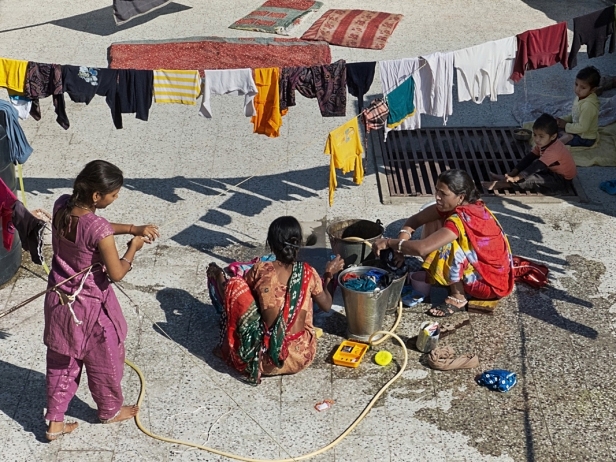
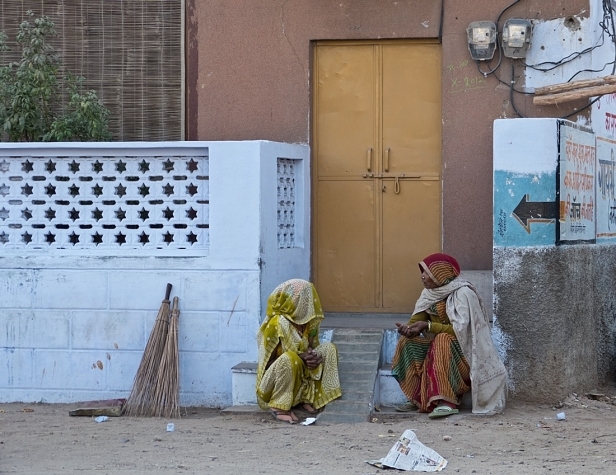


And then there’s the thousands upon thousands of people who flooded into Pushkar from the desert for the livestock fair, and the thousands more who came from all over India for the many religious ceremonies that are held at the same time.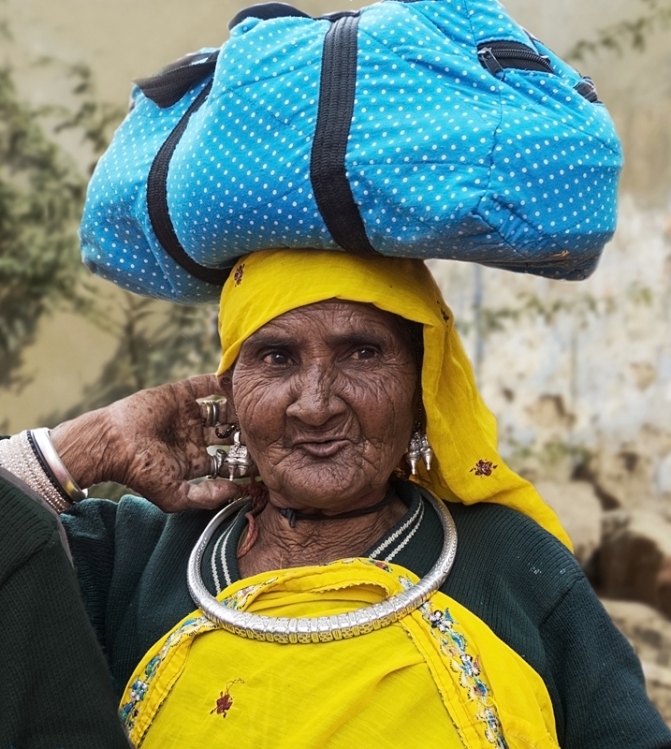




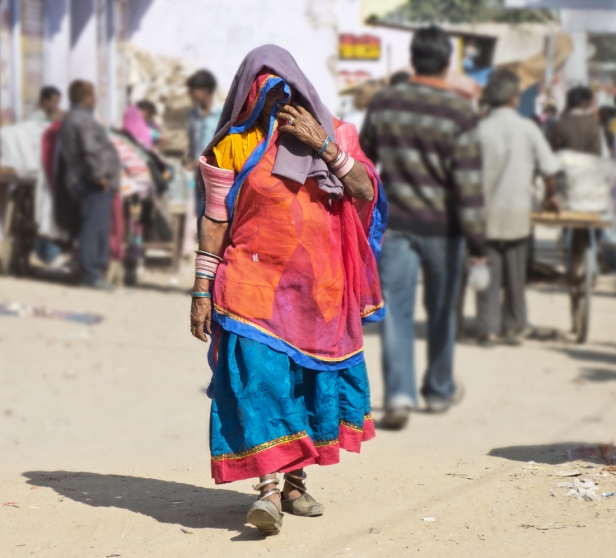


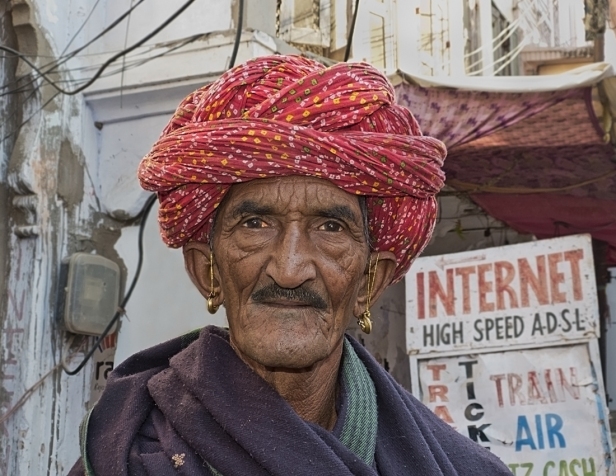


Religious ceremonies are held every day. We went to Maha Arti one evening. It was held on the ghats, which are the steps leading to the lake, every evening. A ceremony of lights and chanting: with the sound system turned up so loud it was all distorted. And many people lit small oil candles and let them go into the sacred waters of the lake with a prayer.


We went to the Brahma temple for Puja. The Brahma temple in Pushkar is one of very few temples to Brahma in all India. It is the most sacred of the sacred. Thousands come to Pushkar just to go to the Brahma temple. I could feel the energy of devotion of hundreds of thousands of people over hundreds of years and was moved to tears.
There are four hundred temples in Pushkar. One day hundreds of women in the most brightly coloured saris swept into town, clogging the streets, and poured into one of the temples. By the end of the day they had all left again.
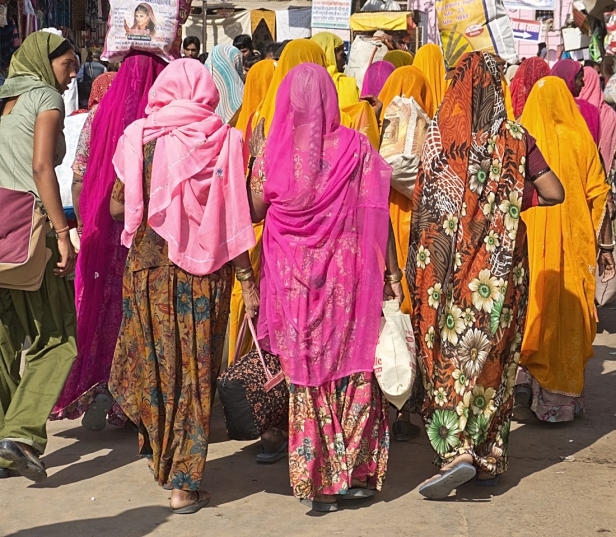

One day there was a procession with cars and vans decorated with flowers covering them, and a big silver wedding chariot pulled by a white horse, and a marching band, and at the end a camel chariot and in the back these two dressed as hindu gods.
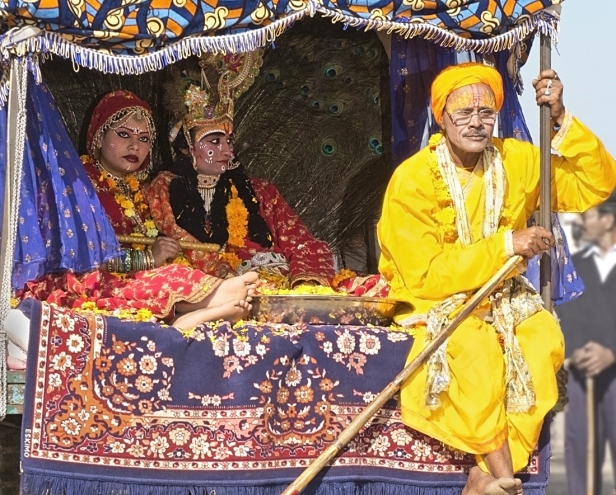
On two evenings we went to see the dance performances at one of the temples. On one of those evenings we arrived a bit early only to find a huge Hare Krishna Elephant-on-wheels, being ridden by someone special, who was being administered to by a priest who also rode on the huge contraption. And the whole thing was accompanied by loud-speaker chanting, and by hundreds of people, as it rolled slowly around the large courtyard of the temple.
And then there was this: a sadhu (holy man) covered in ash, walking slowly down the crowded street, in a deep deep trance, in one hand a begging bowl, in the other a bell he was constantly ringing, his tongue out a little, and through his tongue a spike. Many people, including us, put money in his bowl as he passed. It is said that everything is possible in India, and I think we actually got to witness one of the true holy men of India that day.


And on the final day is the big, most important full moon ceremony down on the ghats. Everyone bathes, for purification, in the sacred lake in the holy city.


There aren’t enough words to describe Pushkar during the Camel Fair. Every day, everywhere we turned there was something new to see, to experience. It was a zoo, a carnival, an extravaganza all rolled into one. Everything was happening, and sometimes it seemed as if everything was happening at the same time, and it didn’t matter where we turned there was something else going on, something new to see.
The next post will be about the temple dancing, and all the events at the stadium – the camel races, the school girls dancing, the camel decorating contest, the horse judging, the closing parade.
All words and images by Alison Louise Armstrong unless otherwise noted.
© Alison Louise Armstrong and Adventures in Wonderland – a pilgrimage of the heart, 2010-2015.

I’ve noticed that in your photos in India, people who look at you and/or notice the camera just look. Openly, mostly without expression and with what seems complete ingenuousness. I’ve seen none of the common N.American need to “present” — smile, wave, pose, or otherwise acknowledge being photographed, even if by strangers. Would you mind posting a comment about what’s your experience with the people and the camera? Thanks!
LikeLike
India is a photographer’s dream for photographing people. Very few people don’t want to be photographed. Far more often they will ask for it. “one photo”, “one photo” is a very common plea. They love to be photographed. So I rarely felt uncomfortable just taking pictures – into a crowd, or up close, or by surprise, or after asking. Almost always when I took a photo “by surprise” and the person or group realized it they’d all laugh. I also use the zoom to get candid shots and the person never knows.
Pushkar was a little different in that there were many rural people and the women particularly keep their faces hidden, but not always. And if you look closely at the photo of the four women together, the one on the left with her suitcase on her head is smiling underneath her blue sari.
This is for me a big difference between India and SE Asia that I’ve noticed so far – when Indian people know they are being photographed it is still easy to keep them laughing, or, as you say, just being, looking without guile at the camera. With SE Asians it doesn’t matter how much I connect with them, get them laughing, get them feeling comfortable, as soon as I lift the camera a subtle mask comes down. I have to be very quick. Usually I’m not quick enough.
LikeLike
Love these photos Alison. You really capture the magic of India and the camel fair here. I love the sadhu photo. I’m jealous that you were blessed by the sacred monkey. haha
LikeLike
Thank you so much Kozo. I too love the sadhu photo. It one of those photographer’s dream photos where everything goes right – light, camera settings, angle, etc. I was a bit nervous about posting it, but decided to anyway.
Re the monkey – yeah haha. It was a bit shocking actually. So completely out of nowhere. However I never travelled anywhere in India without antiseptic wet wipes. Thank goodness, otherwise it would have been quite yucky. Also lucky I only got it on my skin and not on my clothes.
LikeLike
I enjoyed your entire post and the pictures are gorgeous. However, I will occasionally be laughing to myself today thinking about your monkey story – so hysterically told!
LikeLike
Thanks. I was going for a bit of humour there. Good to hear I succeeded.
It was so bizarre. Suddenly out of no-where for no apparent reason I’m getting wet! My first thought was it’s raining, but quickly realised that couldn’t be true.
LikeLike
I’m glad you have a sense of humor about it – there’s an “ick” factor that I’d have a hard time shaking!
LikeLike
Oh me too definitely, except that I had the wet wipes so could immediately wipe it all off. And it was only on my skin, not on my clothes.
LikeLike
I know that it must look strange that I’m commenting our blog, but we’ve been having difficulties commenting or Liking other people’s blogs, so this is a test. Don
LikeLike
I hear you on the ‘assault on the senses’. I like the mountain area’s better of India. I’m not much of city person. The first time I went to Delhi I asked my friend if it was a national holiday, He laughingly told me not to expect a moment of silence. After a while you won’t notice anymore 😉
Thanks for sharing this post. The pictures are stunning! Makes me miss India heaps!
LikeLike
Thanks for your compliments. Yes, India is an assault on the senses. I absolutely loved it, however after 6 weeks in India we went immediately to 2 weeks on a beach in Thailand to recover. We were exhausted.
(We loved Delhi, but then we had to escape. It’s madness.)
LikeLike
You really capture India well I think – from my time in the Persian Gulf I have wonderful Indian friends, just as you describe – with an ability to find everything and anything funny. I mention Arabia because I understand how useful the camel is. Wonderful post – really, really good photography too.
LikeLike
Thanks! I loved India despite the dirt and garbage and poop everywhere (there’ll be a post on all that eventually!) – the people are so welcoming, and it’s so exotic!
Camels everywhere! And children handling them like pros. You could easily tell how much they were valued by their owners.
LikeLike
I can see from your descriptions and photos that you love India – as I do – when I was there I felt like I was Home – Looking forwards to following your further Journeys!
with Love, joy and Peace on your Way ~
Tomas
LikeLike
Thank you Tomas, and thank you for following. I hope you enjoy our journeys.
Yes I do love India and would go back, if only to go back to Ramana’s ashram. Don however has a much harder time than I do with the dirt and the garbage and the cow poop everywhere. I think it unlikely that I will ever get him back there. But you never know . . . .
Blessings
Alison
LikeLike
I love these posts, probably more because I can truly relate to them. I intend to go back to the camel fair some year. It’s an incredible experience. Your photos are breathtaking, may I ask what camera you shoot with?
Lacey
LikeLike
I’m so glad to hear you’re enjoying these posts. I thought you would because you’ve been there and you know what it’s like.
I have a bridge camera, a Panasonic Lumix FZ150 with a 24x Leica zoom lens. I’ve had it about 2 yrs now and want an upgrade – picture degradation using the zoom, useless in low light, and useless after-sales service. Still, I have overall enjoyed it, and I chose it partly because of the low weight. Now with these new mirrorless cameras I’m ready to upgrade – much better quality photos without the extra weight of a full DSLR.
LikeLike
I can feel the energy and excitement in your beautiful words and photos. How did people feel about getting their photos taken? You have some wonderful closeups.
LikeLiked by 1 person
Thank you so much Caroline. It was a really amazing time, one of the most spectacular things we’ve been to.
Indian people love having their photo taken and will come up to you and ask you to take their photo. Some of the close-ups are with a zoom, but it really is the best country we’ve been to for people photography – they love it.
Alison
LikeLiked by 1 person